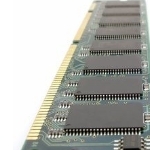
by Fred Langa for Windows Secrets Newsletter
How to Use the Windows Memory Diagnostic Tool
When the need arises to check system RAM, try the Windows Memory Diagnostic tool that comes with Vista and Windows 7 — and is a free download for XP.
This app thoroughly exercises your system’s random-access memory, uncovering problems that can cause crashes, hangs, and other errors.
Every version of Windows, from XP onward, has shipped with professional-quality, system-management utilities, either built in or offered as free add-ons. These apps let you adjust and control many essential operating-system functions and features. Other tools, such as Windows Memory Diagnostic, help diagnose and troubleshoot system problems.
Part 1 of this series, “Accessing and understanding Administrative Tools,” gives an overview of all these tools and explains how to make them easily available from your Start menu.
Part 2 shows how to use Windows’ Performance Monitor to analyze and understand, in real time, a PC’s status as different programs run — or fail to run!
In Part 3, I briefly describe how RAM works, how it can fail, and how to run the Windows Memory Diagnostic diagnostic app.
Understanding the three major components of RAM
All data currently in use by your PC — the code and data of running programs, transient user data, internal system variables, and more — is temporarily stored in a PC’s RAM system. (See Wikipedia’s RAM article for more info.)
For a PC to work properly, its RAM system must reliably accept, hold, and return data — on demand, time after time. If the RAM system fails any of these critical tasks or accidentally alters the data in any way, a PC will malfunction, deliver bad results, or crash outright.
Note that I use the term RAM system and not just RAM. Although we often casually think of RAM as those strips of chips sticking up from the motherboard, a PC’s RAM system is typically made up of three separate elements:
There are the banks, usually two to four, of RAM chips plugged into the motherboard. (In the unlikely event that you’ve never seen the inside of a PC, the banks are comprised of multiple chips mounted on long, thin circuit boards. They snap in and out, letting you easily increase the amount of RAM in a PC.) When someone asks how much memory a PC has, they’re almost always referring to these RAM banks.
A PC’s CPU also contains a modest amount of ultra high-speed, internal RAM — the microprocessor cache. Because this memory is part of the CPU circuitry, its size is fixed. The microprocessor cache RAM holds the program code plus data that’s in immediate use by the CPU — the input, output, and intermediate results of step-by-step computer operations.
The RAM system is managed by a controller, which writes and reads data to and from RAM and keeps the system properly synched.




